🦊 Sketchplorations
#105 — Behind the scenes: Illustrating a book of fables
Hey friends,
I’ve been hard at work on the illustrations for my book of fables. I’ve got draft versions for most of them, so now I’m going in and redrawing them with pen and coloring with digital watercolor. It’s a fun process to take my old sketches and bring them to life with color.
Today, I’m excited to share a little behind-the-scenes illustration process with you! If you’ve ever been curious about the process of concept sketches versus final illustrations, I think you’ll really enjoy this edition.
We’ll be looking at a couple of illustrations for my fable Turtle’s Tide, in which a turtle leads the crew of his ship through wave after wave of obstacles. Here’s a short preview of how the fable begins…
Turtle’s Tide
A weary turtle stands at the helm of his ship, eager to get his crew back home after a year at sea. Heavy bags hang under his eyes from long nights of piloting the ship. His hard shell carries the scars of leading his crew through many battles.
A cat approaches him from behind. It’s his lieutenant. She’s second-in-command on the ship. The lieutenant is an ambitious cat who began her career sweeping the decks, then quickly moved up the ranks. “Captain,” she says. “You’ve been at the helm all night. Maybe it’s time I take over?”
The ship leans hard to its side. The thrashing waves test the turtle’s grip on the wheel. A thundercloud cracks in the distance.
“It’s too dangerous,” says the captain. “A storm is coming.”
“Let me help, sir. I’m ready for the challenge.”
“Do your duty, then, and take the crew down below.”
“But—”
“Go,” says the captain. “I’ll handle this.” He looks out at the ominous storm and the thrashing waves ahead. He takes a deep breath, then turns back to the crew and shouts, “Onward!”
The lieutenant watches the captain from afar. She leans against the ship’s walls with folded arms, shaking her head. She knows she can handle this storm, and she wants to prove it. Another thunderclap cracks the lieutenant into action. She shouts commands to assemble the crew.
And so begins the tale of the captain and his lieutenant!
Now, at this point of the story, I include an illustration of the lieutenant cat, as she “watches the captain from afar.” I did a sketch of her a long while ago when I first drafted the story:
Last week, I took the sketch and redrew over it with pen tool, and added some color:
I was happy with how her face turned out, but something about the overall illustration felt…lacking. I wasn’t sure exactly what was missing, but it felt like it lacked appeal, or perhaps not enough movement.
I shared it in my book-writing group and my friend Heather noted that the lieutenant doesn’t seem particularly frustrated in this illustration. She was right. For someone who is supposedly agitated, the lieutenant looks a little too relaxed.
I realized I had moved onto the polish of the illustration too early, before getting the foundation right. I needed to start from scratch to get this one right. I had to find a way to bring out her frustration into the illustration.
So late that night, I pulled out my pencil and started drawing. I told myself to forget about how she looks, not worry about any details whatsoever, and just focus on how she moves.
In other words: Pose first, polish later.
Let’s take a look at some of those midnight sketches, shall we?
A: Grumpy — She’s holding and squeezing some kind of rope, which demonstrates her pent up anger.
B: Slumpy — She reluctantly follows orders and walks away cranky, dropping her head and dragging her feet.
C: Disappointed — She looks down at her reflection in a puddle and thinks, “I deserve better than this.” So it’s still frustration, but along with sadness and disappointment.
D: Angry — She does as she’s told and commands the crew to go down, but sees a lazy mouse that isn’t moving fast enough, so she “helps” the mouse along. This idea just made me laugh too much, so I had to sketch it 😂
E: Scrunched — She stands with folded arms, scrunched shoulders and clenched fists, trying to cover up her anger (but not quite succeeding.)
After all those sketches, I felt like the scrunched shoulders and clenched fists were the most fitting for her mood, so I gave that combo a pass:
Aha! I felt like this latest pass was the right way to go, so I put down my pencil and went to bed.
Later, I came back to do a full color illustrations pass on it. Here’s the final result:
Nice! I’m never completely satisfied with an illustration, but I felt this was a significant step forward. It does a much better job of showing some movement, and making her state of mind visually apparent. I hereby call this one done!
Sketching is my favorite part of illustrating. I’m grateful that since I set my own timeline with this project, I can afford the space to stop and explore when needed, while still maintaining momentum.
For me, concept sketching is the most creative phase of the illustration process—rather than trying to draw the best / most polished illustration, I get to play around and try different ideas without worrying about them being perfect. Plus, I get to do it with pencil on paper, which has such a satisfying tactile feeling, and also gives me a much needed break from screens.
I believe that all creativity benefits from some form of sketching—whether we are outlining a written draft or pseudo-coding a software program, it’s invaluable to give our brains a chance to think creatively about the foundation before we focus on details and get overwhelmed by the burden of polish.
Thanks for reading, and if you’re curious what happens next with the lieutenant, stay tuned for the full version of this fable along with the others in the book, coming soon!



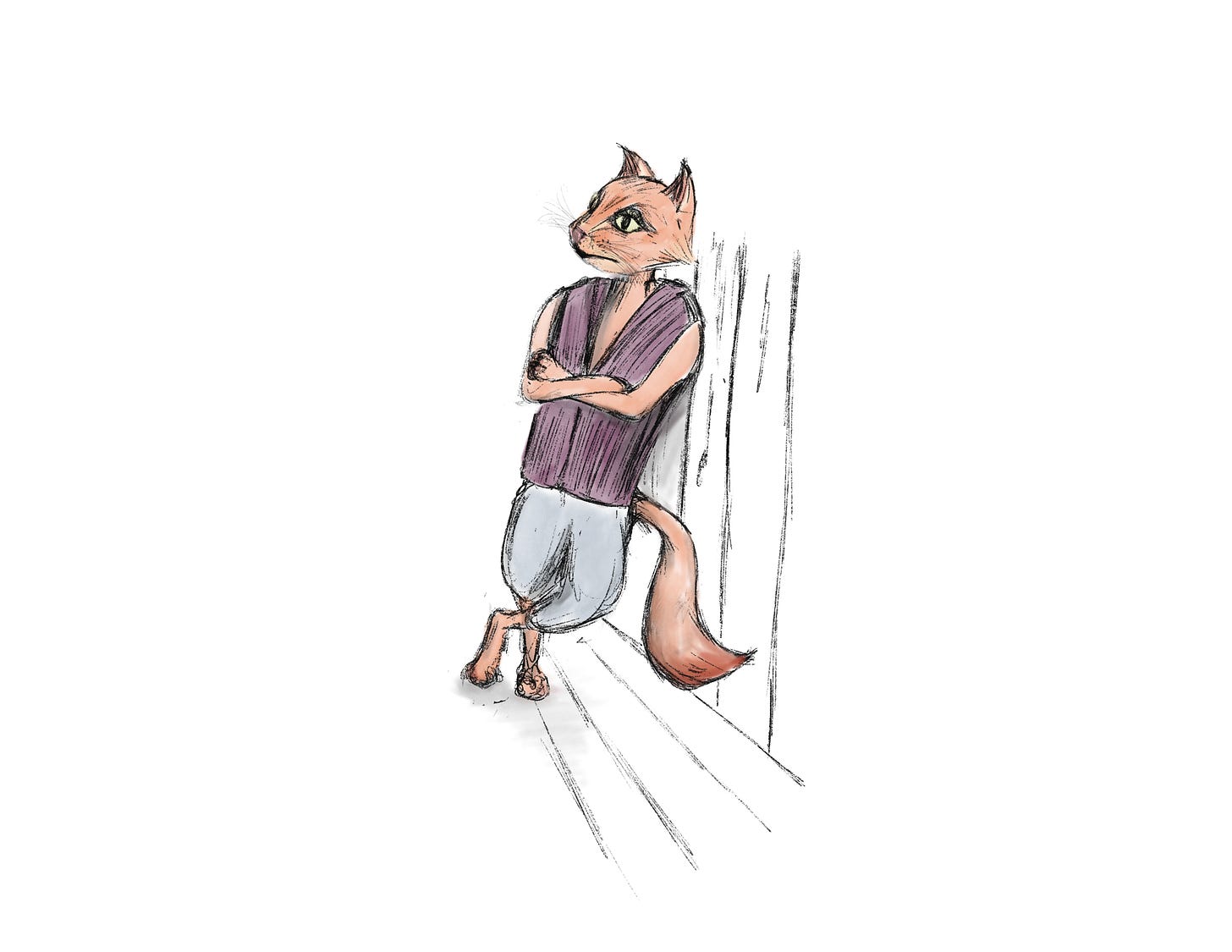
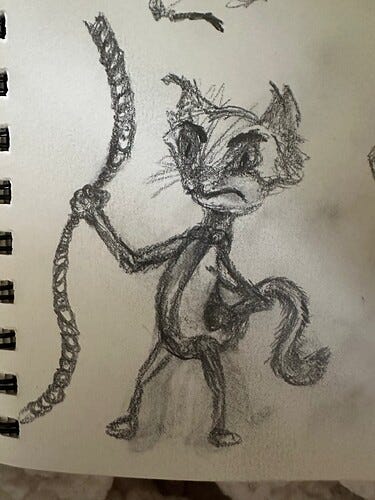

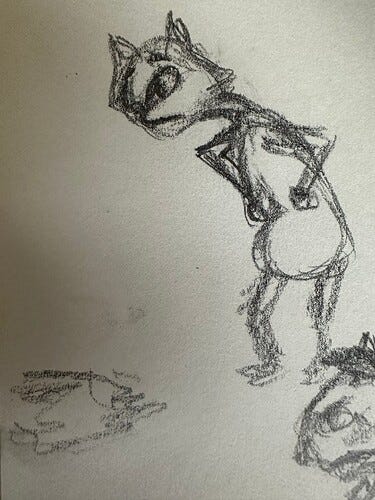
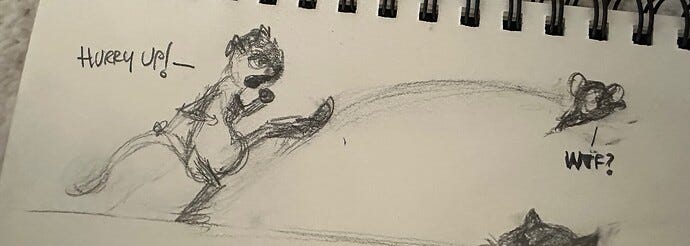
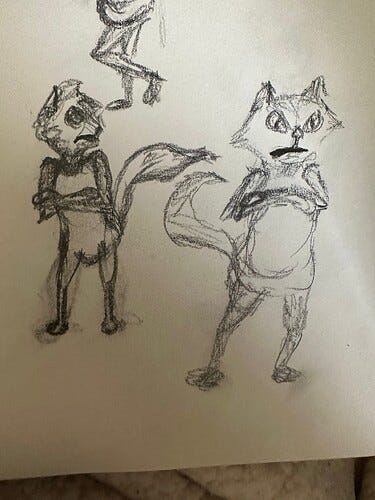
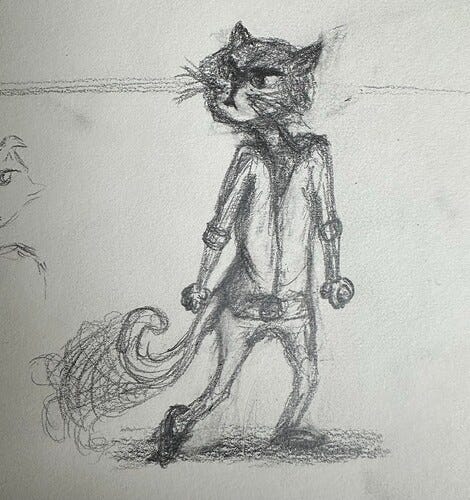

I love seeing the evolution of your process, Salman! And I agree the “final” version looks better!